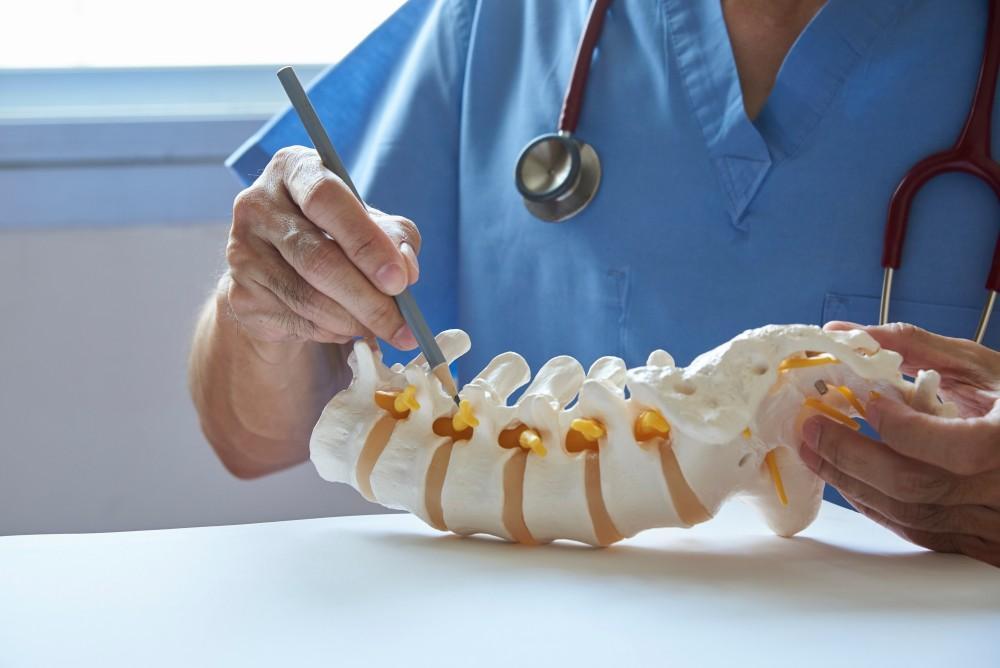
Consider These 3 Treatment Options for Sciatica

Sciatica is a form of radiculopathy, pain that travels from a “pinched” nerve root in the spinal canal down the length of the nerve into an extremity, in this case the leg.
The sciatic nerve is the longest nerve in your body, extending from the lumbar (lower back) spine and splitting off into two branches, each of which travels through your buttocks and down the outside of your legs and feet.
If the nerve’s root at the L4-L5 and/or L5-S1 vertebral junctions becomes impinged for any reason, you can experience pain, numbness, and tingling anywhere along the nerve’s length. The pain can range from mild and intermittent to cripping and constant.
At Vertrae®, board-certified neurosurgeon Dr. Kamal R. Woods and his team know how uncomfortable sciatica can be and how it can impair your daily activities. That’s why they offer the latest diagnostic and treatment technologies to give their patients relief. Here’s what they want you to know about sciatica and three treatment options that can help.
What causes sciatica?
Sciatica is a common condition, one that 40% of Americans will experience at some point during their lives. The causes are varied, but all lead to a “pinched” nerve root.
Aging
Your entire body wears out over time, including your spine. Two of the most common causes of sciatica are more prevalent as you get older. The first is herniated discs, where the cushions between the vertebrae lose moisture and break. The inner gel spills out and impinges the nerve. The second is bone spurs, bony growths that result from the friction of bone rubbing on bone and put pressure on the nerve.
Carrying extra pounds
Excess weight strains your entire body, including your spine. A 2014 study found an association in both men and women between being overweight or obese and developing sciatica. Eating a healthy diet and getting regular exercise can help you lose weight and reduce your pain; they also improve your cardiovascular and overall health at the same time.
Occupational hazards
Jobs that require you to sit for long periods of time, say, at an office or driving a truck, increase your chances of developing sciatica more than people who are active throughout the day. That’s especially true if your work setup isn’t ergonomically designed and you don’t maintain good posture while sitting.
Also, jobs that require you to routinely bend and twist or lift heavy objects increase your risk for developing sciatica, as you’re putting an extra burden on your spine.
3 treatment options for sciatica
Sciatica generally responds well to conservative treatments. Our goals with these treatments are to relieve your pain and improve the underlying problem(s) contributing to your condition.
1) Oral medications, such as non-steroidal anti-inflammatory drugs (NSAIDs), relieve pain by decreasing inflammation. If the over-the-counter ones you try don’t work well enough, we can prescribe something stronger.
2) Steroid injections contain a fast-acting anesthetic to immediately dull the pain and a longer-acting steroid to combat the inflammation. Injecting it directly into the joint or muscle that’s causing the problem can eliminate your symptoms for several months at a time, giving you the opportunity to engage in the third treatment option — physical therapy.
3) Physical therapy (PT) improves your flexibility while helping to strengthen tissues in the lower back, pelvis, abdomen, buttocks, and thighs.
The goals of PT in treating sciatica are to:
- Restore pain-free movement
- Relieve pain along nerve length by relieving nerve root compression
- Reduce muscle spasms
- Restore function of the lumbar spine
- Improve mobility of the lower body
- Decrease inflammation
- Reduce perception of pain through neurological adaptation
- Prevent future pain flare ups
Physical therapy may or may not be combined with other pain-relieving treatments, such as medication, injections, and/or a microdiscectomy procedure to repair a herniated disc. The more you commit to the process and practice the stretches and exercises you’re given, the better you’ll feel.
If you’re dealing with the pain and discomfort of sciatica, there’s no need to suffer any more. Vertrae® has treatment options that can help. To schedule a consultation with Dr. Woods, call us at either location, or book online with us today.
You Might Also Enjoy...


5 Common Signs of a Compression Fracture

Using Your Own Platelet-Rich Plasma to Alleviate Your Back Pain

A Closer Look at Your Sacroiliac Joint

4 Benefits of Outpatient Spine Surgery

